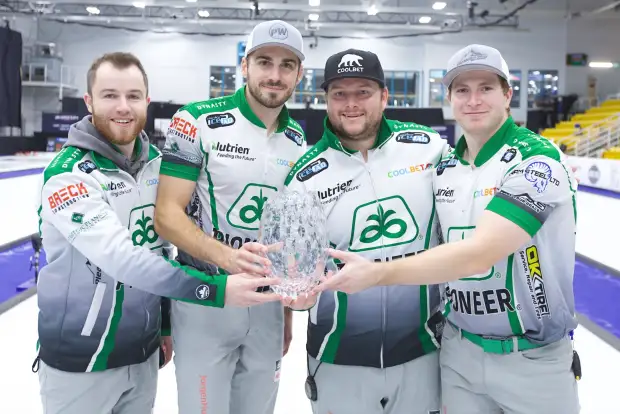The recent Triple Knockout format made a triumphant return to the Grand Slam of Curling series in Charlottetown, and it certainly brought a fresh vibrancy to the event. This year’s tournament showcased not just the thrilling competition on the ice but also a host of innovative features that made the experience even more engaging for fans and players alike.
One of the standout elements was the live streaming of every game from the moment the first stone was thrown. Fans had the opportunity to watch the matches in real-time, which significantly enhanced the viewing experience. The Curling Group and HomeTeam Live introduced a new feature called Full House, allowing spectators to view up to four games simultaneously on a single screen, a move that greatly added to the excitement. An app was also launched during the second day of the event, promising further enhancements in the future, alongside a new merchandise shop for both the Curling Group and the Grand Slam brands.
Adding a unique twist to the festivities was the Grand Slam of Karaoke, which offered a $1,000 prize to the best performer. While this aspect may not have been as widely covered, it certainly piqued interest among attendees, and seeing it live would undoubtedly add to the fun. In addition to this entertainment, there was a second-tier competition running concurrently, where thirty-two teams fought for a shot at glory, with notable victories going to Rylan Kleiter from Saskatchewan and Halifax’s Christina Black.
On the ice, the format switched from the traditional pools to the high-stakes triple knockout style, reminiscent of past World Curling Tour events. In this setup, teams that lose one match drop to the B-side, and a second loss relegates them to the C-side, leaving them with only one final chance to continue. This relentless format can lead to intense pressure, particularly for teams like Brad Gushue’s, who faced the grueling task of winning four consecutive matches just to reach the finals, including three matches in one exhausting day.
Despite their efforts, Gushue and his team ultimately succumbed to Scotland’s Bruce Mouat in the championship match, suffering a 10-3 defeat. Gushue acknowledged the physical and mental toll of their demanding schedule, noting the challenges faced during their path to the finals. While the grind may seem more pronounced in the triple knockout format, many players today benefit from a structured support system and preparation that enhances their performance compared to earlier eras.
The women’s competition was equally thrilling, with Rachel Homan and Kerri Einarson battling through a demanding schedule to reach the finals. Both teams faced early setbacks but managed to rally back without dropping further matches. Einarson’s victory over Homan for the title highlighted her impressive adaptability amidst a season filled with lineup changes. Meanwhile, in the Tier 2 finals, Kleiter and Black secured their wins, further enriching the competitive landscape of the tournament.
As the event concluded, it was clear that while some teams faced the harsh realities of the knockout format, the overall experience in Charlottetown was filled with excitement and memorable moments. The thrill of competition, combined with innovative viewing options and entertaining side events, made for a remarkable week in the curling calendar. The legacy of the Triple Knockout format continues to captivate audiences, reminding everyone why this sport is both challenging and exhilarating.

